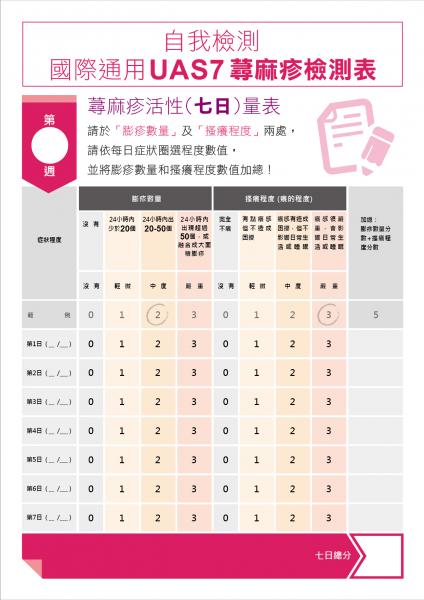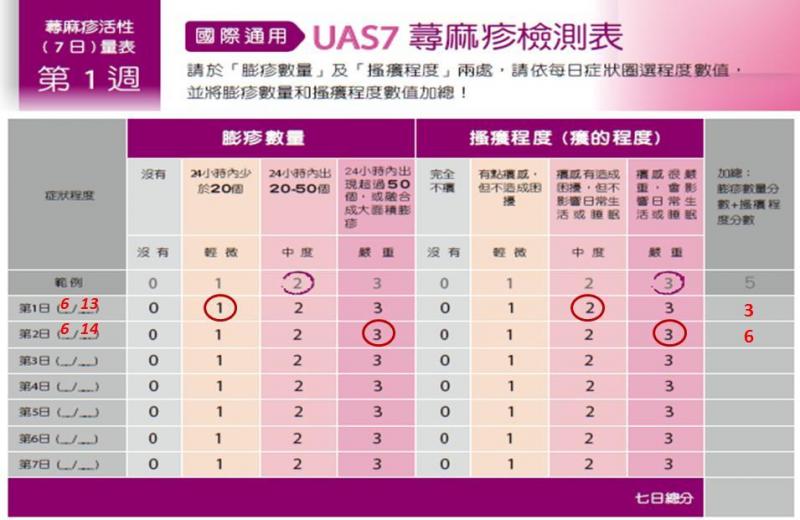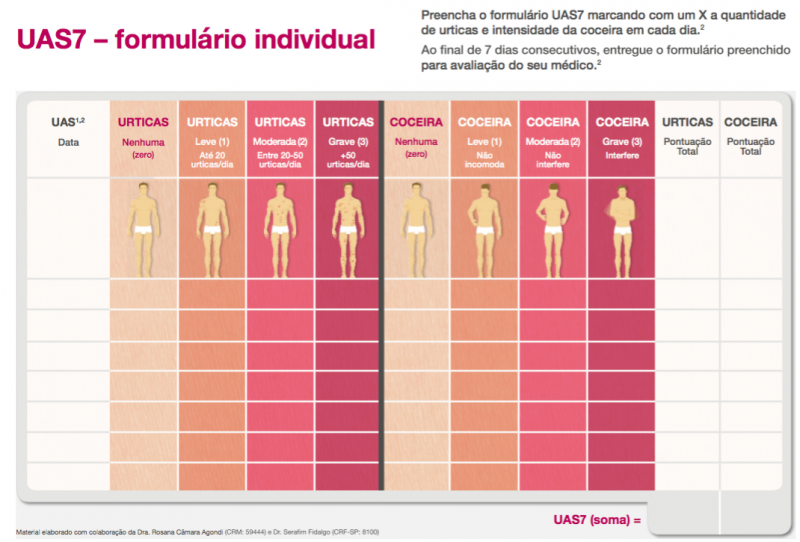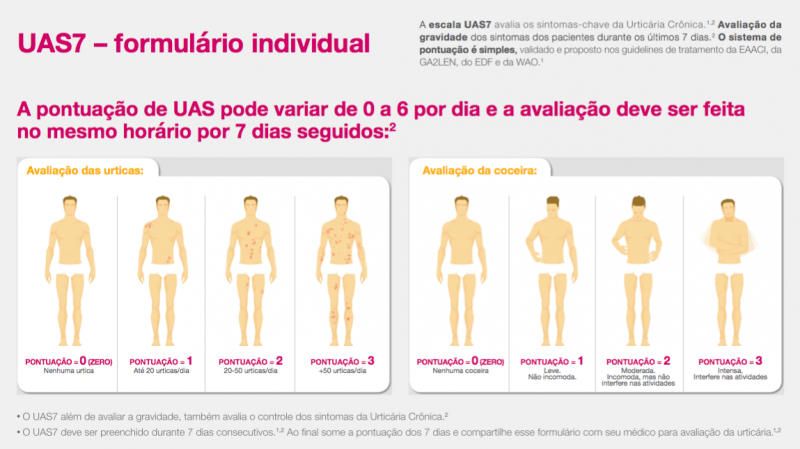Hypospadias and Penile Problems in Children Including Observation Registry
Hypospadias and Penile Problems in Children Including Observation Registry
Plain-language summary of proposal:
Hypospadias is a condition that occurs in boys where the urethral meatus, or opening where the urine comes out, is not in the typical position. The current consensus among pediatric surgeons it to repair the hypospadias surgically within the first year of life so that the boy will be able to live his life with a “normal” penis. Thus, hypospadias surgery is now one of the most common genital surgeries performed in children under 18 months of age. Recently, however, doubt has been cast on the validity of this consensus view. First, the complication rate of these surgeries is high, second, the risk of anesthesia is higher in these young children, and third, there are ethical questions regarding informed consent; i.e., the ability of a minor to consent to genital surgery for a non-life-threatening condition.
So, the question becomes: Is living life with the penile meatus not in the typical position detrimental to a child’s and/or adult’s quality of life? If it is not detrimental, then the obvious answer is that we should wait; surgery can be done when the child is older. However, it is also important to ask this question among a diverse group of people, as different ethnicities and cultural backgrounds will most likely affect how this question is answered. Certain groups of people may do better with early surgery, and others with surgery later in life. This has never been studied before.
Our hypothesis is that most hypospadias surgery is unnecessary in infants and small children, but the results will vary by ethnicity and cultural background. One of the ways we will study this hypothesis is by seeking out adults with hypospadias who have never had surgery, and see how they fared in life. Since almost all children in the past have had surgery for their hypospadias, the numbers of “non-surgically altered” hypospadias patients are quite small, so we will need to study a very large group of adult men to find these patients. The only way to recruit enough adult patients from diverse groups (to include people with different ethnicities, sexual preferences, gender identities) would be online, through electronic medical records, and with community involvement.
We will create the first registry for hypospadias in the nation, and this will be the first time watchful waiting (non-operative treatment) of genital atypia will be evaluated scientifically, and the first time a large diverse group of adult non-operated patients can be studied.
Full proposal:
Mild penile disorders, such as distal hypospadias and its variants, are common and occur in approximately 1% of boys. More severe penile disorders, such as differences of sex development (DSD), are less common, but both hypospadias and DSD can have profound impacts on a child’s quality of life. Most of these children receive surgery at a young age, usually before 18 months of age. Hypospadias and chordee surgery are some of the most common genital surgeries performed in children under 18 months of age. However, there is currently very little evidence that infant genital surgery has a beneficial effect in the long term. In the short term, surgery can create external genitalia that conform to parental and societal perceptions of what is considered normal, which is why the surgery is so common, but these perceived benefits can come at a cost to the child. There are some data that performing surgery early in life may have lower complication rates, but conversely, there are also data that show no difference in the complication rates between early and late surgery. However, there is a significant complication rate for early surgery, even for mild forms of childhood hypospadias; the complication rate has been reported to be up to 10%, and many of these patients may require more than one operation, and possibly have long term sequelae even into adulthood, including psychosexual sequelae. There are also new concerns about short term memory loss associated with general anesthesia in the first two years of life, and additionally, concerns about informed consent are arising that question the ability of the parents to make decisions regarding their child’s genitalia.
Our hypothesis is that most of these surgeries are unnecessary in infants and small children, and children will have a normal quality of life (QOL) without surgery, and possibly an improved QOL, since the complication rate for penile surgery in infants is up to 10%. There are two ways to test this hypothesis: one is to offer select children non-surgical treatment at their first clinic appointment and then follow them prospectively through adulthood; the second is to find adults who have never had penile surgery for their atypical genitalia and see how they fared in life. It is the second method that this proposal is most interested in, since this adult cohort can be identified and recruited online, or by reviewing EHR’s. In fact, since DSD’s are a rare disorder, the only way to recruit enough adult patients from diverse groups (to include people with different ethnicities, sexual preferences, gender identities, ages, and different forms of DSD’s) would be online.
We propose creating the first ever registry that includes non-operated patients with penile disorders (Hypospadias and Penile Problems in Children Including Observation Registry - HAPPIOR). We will follow the patients prospectively giving us the ability to perform observational comparative studies as the data comes in. The HAPPIOR study will recruit new patients through urology clinics as the patients arrive, but more importantly, we will be able to develop a large diverse cohort by also recruiting patients utilizing electronic means such as EHR extraction, on-line social media and dedicated web sites, including community involvement. Community involvement will be essential for not only recruitment, but for helping us to be certain that our approach is sensitive to that specific community.
HAPPIOR will be the first registry for hypospadias and other penile anomalies in the nation, and the first time watchful waiting (non-operative treatment) of genital atypia will be able to be evaluated in a prospective fashion, and the first time a large diverse cohort of adult non-operated patients can be studied. Because of the potential for this study to change the timing of genital surgery – i.e., allowing the patient and not just the parent to participate in the decision-making process, we have the support of the Accord Alliance, a major patient advocacy group for children and adults with disorders of sex development (DSD) and an important advocacy group in the DSD community.
This proposal addresses both aspects of the Diverse eCohort Research mission: developing a large cohort that can only be accomplished with online support, and creating that cohort so that it is diverse. Diversity is essential in this type of research as different population groups (and sub-groups) have very different pre-conceived notions of what constitutes “normal” male genitalia. For example, it is the authors experience that certain population groups are much more comfortable with the penile meatus being somewhat proximal, or of foreskin abnormalities, than those of other populations. We will plan to recruit Spanish speaking patients to help study this hypothesis among that population, and we will also study other ethnicities. We will also study variations in sub-groups among the different populations, such as sexual preference, gender identity, religious values, age, and others.
In the first year, this registry will initially include only patients seen and recruited by UCSF faculty, however, the goal is to eventually expand the registry to include other centers, and to develop a global initiative as well. This current proposal, if chosen, would be used a pilot study for a larger NIH grant proposal used to extend the time period and the cohort. A previous pilot study by the author was able to recruit 52 men with untreated penile anomalies by using a simple Facebook advertisement, so the author anticipates with a robust web presence, community involvement, and EHR extraction, this number can be increased to over 1000 in the first year. Preliminary results would be able to be used immediately to show that non-surgical treatment is an option in these patients, and this information will be disseminated to the DSD community through advocacy groups such as the Accord Alliance. In addition, the results will be shared with legislators to help them develop government proposals regarding genital surgery in children (there is a current non-binding resolution in California to ban genital surgery in children, and we would be proactive in making sure the legislatures base their final decisions on sound science).
Recruitment will be twofold. We will recruit existing UCSF urology clinic patients into the HAPPIOR registry as they come in to clinic. Additional patients will be recruited by electronic means (EHR extraction, Web). This will be accomplished utilizing a UCSF online research platform per the eCohort proposal. Local patients discovered by electronic means will be invited to the urology clinic for a routine patient appointment where data will be collected (including digital photography in patients under 2 years old), deidentified, and placed in the registry. For non-local patients, data will be collected online, deidentified, and placed in the registry. Inclusion criteria are any self-identifying male with hypospadias, chordee, megameatus, micropenis, bifid scrotum, penoscrotal transposition, or DSD.
Appraisal tools will be based on age and include, but not be limited to: The Penile Perception Score (PPS) (the PPS for adults and the PPPS for children and parents), the Sexual Health Inventory for Men (SHIM), the International Prostate Symptom Score (IPPS), and the Multidimensional Sexual Self Concept Questionnaire (MSSCQ). QOL will be measured using more broad-based measures (e.g., The Multigroup Ethnic Identity Measure, the Index of Race Related Stress--Brief Version, and the World Health Organization Quality of Life--Brief Version) so as to control for the differences seen in QOL in different racial/ethnic populations.
Routine physical examination with measurements, and 3D digital photography in children under two years old, will also be performed in those patients seen in clinic.
This study has already been submitted to the UCSF IRB and has passed through the preliminary review phase and is awaiting final approval. Our research team is self-supporting, i.e., not requiring salary support or direct funding from this opportunity. However, if selected, after the one-year period of in-kind support, we will plan to keep the project active indefinitely, initially with internal funding (from the PI’s Medical Project fund) for one additional year. After the first 2 years, we anticipate having convincing preliminary results and plan to extend the database to multiple institutions and locations utilizing external funding.
If chosen, this study will facilitate discovery of specific phenotype/outcome associations and measured versus perceived characteristics of genital anatomy in a large diverse cohort. This project will act as a basis for a future long-term registry and will lead to observational studies that will finally determine the necessity and efficacy of early genital surgery in children.
Commenting is closed.







Comments
This is a perfect proposal
This is a perfect proposal for this mechanism and will bring needed community engagement and broad representation across diverse populations.
Given the significant burden
Given the significant burden surgery places on the infant and family, assessment of long-term outcomes and will allow providers to better inform families and allow them to more fully participate in shared decision making, with the critical benefit of avoiding potentially unneccesary procedures. This funding mechanism would provide importatn support for this type of registry.
This innovative study has
This innovative study has great potential impact for children with minor hypospadias. Novel data collection methods will be needed to reach the patients with untreated hypospadias.
Thanks for taking the time to
Thanks for taking the time to add your proposal. Our selection committee has UCSF and non-UCSF community-based members and non-medical staff so a short, accessible summary will make it easier for everyone to engage. Could you share a 150-word plain-language summary of your ideas?
I added a plain-language
I added a plain-language section last week - thanks for the suggestion.
This is a very important
This is a very important question that needs to be studied with significant implications for those patients and families
Nice proposal. Can you
Nice proposal. Can you clarify whether you and your team, if selected, will have the resources to continue to support the project through at least Fall 2020? As you know, this proposal does not provide salary support.
Thank you, and yes, we will
Thank you, and yes, we will have support after the 1 yr period. I edited the proposal to reflect that.
In summary, our research team is self-supporting, i.e., not requiring salary support or direct funding from this opportunity. However, if selected, after the one-year period of in-kind support, we will plan to keep the project active indefinitely, initially with internal funding (from the PI’s Medical Project fund) for one additional year. After the first 2 years, we anticipate having convincing preliminary results and plan to extend the database to multiple institutions and locations utilizing external funding).
This is a sensitive topic!
This is a sensitive topic! How did your Facebook-based recruitment go? Did you get any negative feedback from your ads? How might community organizations "pitch" this project to their communities given the sensitivity?
Yes, this is a sensitive
Yes, this is a sensitive topic! But interestingly, many adults did show gratitude that someone reached out to them. Few people are comfortable discussing their penile anatomy with providers, and most do not feel comfortable at all, especially in certain ethnic cultures. Thus there is very little data on these patients, they remain “hidden.” So we were surprised by the overwhelmingly positive response to our Facebook survey; there was really no negative feedback. I did not mention this in the proposal, but we asked patients to send us photographs of their penile meatus or curvature, and we received many despite the taboo associated with discussing genital anatomy with others. I think we will be surprised with how easily community organizers will be able to address this with their community – nobody has ever reached out to these patients before and just being heard will be a huge weight lifted off their shoulders.
Are you interested in a non
Are you interested in a non-English version of the surveys and study materials? What language, if you had to pick?
Yes, in the proposal we
Yes, in the proposal we mentioned that certain ethnicities perceive atypical genitalia in different ways. We therefore would be interested in non-English versions, especially Spanish for two reasons. First, Spanish speaking patients have different attitudes about the importance of where the meatus is (they seem to be less concerned), and second, there may be a large population of Spanish speaking adults in Northern California who have never had genital surgery since they were born in Latin America. Since most North Americans with hypospadias have had genital surgery as infants, we are likely to find more non-operated Latin American patients if we reach out to them.
Interesting topic to say the
Interesting topic to say the least.
1) for the local non-clinic sample and given recruitment will be on-line --- what approaches/ideas have you thought about that engage the community advisors? how can they best help?
2) have any of the scales and/or questionnaires been pilot tested for non-english speaking patients? have they been reviewed for cultural appropriateness which requires pilot testing.. too often scales/ questionnaires have not been tested for diverse patient population - they are built by and for a generic white population. Important to note generational status in demographic information
3) QOL - the immigrant Spanish speaking population is very diverse to be able to generalize outcomes - factors suc as country of origin, SES, age, region rural/urban/, transgender, health care access, education level, etc. will inform QOL measurement.. how do you foresee addressing this diversity within spanish speaking male population? and do you have specific research questions or hypothesis for the sub-groups?
4) QOL - do we have a baseline for QOL for different racial/ethnic populations living in US from which to analyze and/or compare? how do you define QOL for the study and how do you take into account / consider how other countries define quality of life? how they see it? different countries have different cultural / ethnic ideas around sexuality/ sexual health etc..
5) do you have diverse research staff that has experience working with men of color, specifically spanish speaking men?
6) It was mentioned in the proposal that additional patients would be recruited from EHR. Would these patients already by part of UCSF or does it involve inviting non-UCSF patients to your clinic? If so, will these participants have to pay additional costs?
7) Will participants receive some form of compensation or incentives for the participation in the study?
Thanks you for the helpful
Thanks you for the helpful comments - I have adressed each below:
1) In our previous study that used Facebook as a recruitment tool, we actively involved the local LGTB community to promote the site. This was mainly through word of mouth from one community member to another, and we were surprised by the positive response. People enjoyed taking the survey and learning about penile anatomy; it was enlightening for many. With the current proposal, we plan to work with various communities in a more in-depth fashion; developing educational modules, and links that will be associated with the surveys. Our hope is that, like the prior Facebook study, people will seek out the online recruitment tool with community activism because they will have the opportunity to learn about something that is not commonly discussed, have community support to do so, and the ability to see a urologist at UCSF if they like. I adjusted to proposal to reflect this.
2) Since this is a topic that is not well studied in any population, there are understandably few scores/scales that have been pilot tested for non-English speaking patients. However, we are very aware of cultural appropriateness, especially for a topic like this, and we would plan to work with community members to pilot the surveys. This method of piloting the surveys would be less scientific than ideal, but our feeling is that with community involvement we can develop sensitive surveys that take into account differences in specific cultures. I added generational status in the demographic section of the proposal.
3) We will not be generalizing outcomes for the immigrant Spanish speaking population; I clarified the proposal to reflect this. In fact, one of the advantages of this proposal is that we will be studying diversity in a diverse population. For example, do Spanish-speaking transgender individuals born in Mexico perceive their genitalia differently than those born in Guatemala, or in California? This is important because our research question is whether we “need” to to do surgery on all children with atypical genitalia. If a certain group or sub-group has demonstrated that their quality of life is no better or worse with their atypia, then we potentially can save many children the fate of unnecessary surgery as infants.
4) Yes, it is known that QOL measurements are different for different racial/ethnic populations. We will attempt to control for this by using more broad-based measures (e.g., The Multigroup Ethnic Identity Measure, the Index of Race Related Stress--Brief Version, and the World Health Organization Quality of Life--Brief Version) and by controlling for the differences published for the QOL in different racial/ethnic populations. I clarified this in the proposal.
5) Yes, our main research team consists of a female who is fluent in Spanish, two members of the LGBT community, and we are all clinicians with busy clinical practices. In fact, we are the main providers of Urology at UCSF Benioff Children’s Hospital Oakland (the PI is the Chief of Urology there) where a majority of our patients are people of color, including a large Spanish speaking population. Between us, we see over a thousand Spanish speaking patients a year, and we’ve all been practicing in Oakland for over 10 years.
6) We will recruit patients who are already part of the UCSF system, plus non-UCSF patients. Whether they are UCSF or non-UCSF, they will receive the normal standard of care for their genital atypia, and because this is considered a congenital anomaly by most insurance providers, their visit will most likely be covered by their insurance. If it is not, then they would need to pay for the visit themselves, and that would be explained to them prior to the visit, as it would for any patient visiting UCSF for the first time. There is no additional compensation for being in the study, and there will be no additional costs.
7) No, other than the incentives mentioned above for learning more about their genital anatomy.
Thanks for this proposal.
Thanks for this proposal. How do you anticipate the Eureka platform could be helpful beyond providng web-based recrutiment and online education, which could possibly happen without Eureka?
Eureka appears to be a
Eureka appears to be a perfect platform for this proposal. If funded, we would like to use Eureka to help us develop a robust internet and mobile app interface which would be engaging for our participants, as well as researchers, allowing us to spark as much interest as possible in participating in this project. As mentioned in the proposal, we are embarking on a study of individuals who have disorders that have essentially never been studied before (non-operative outcomes of patients with penile atypia). In order to recruit, retain and study these individuals, we will need to develop various app and internet interfaces that are sensitive to this unique problem, and having input from participants in the Eureka group will be a vast improvement vs. what can be accomplished with ordinary tech support. Also, one of our aims is to establish a registry of these patients and to follow them long-term (HAPPIOR), and eventually collaborate with other institutions and communities for sharing of data. The Eureka platform seems ideal for this, as it will allow other institutions and communities to become involved much more easily than with traditional forms of collaboration. This is essential for this type of sensitive research. With further funding, in the future the Eureka platform could be the basis for multiple e-cohort studies on this understudied population.
Thank you for this proposal,
Thank you for this proposal, as I did not have much awareness of this condition, nor the ethical concerns attached to it. I'm appreciate all of your responses and at this point I'm curious about your response to Mr. Vargas's comment so that I can rate this appropriately. Thank you.
Thank you for your comment.
Thank you for your comment. Yes, there are many ethical concerns which I believe can only be addressed with solid research. Unfortunately, up to now, there has been very little research on this topic and thus people are basing their treatment decisions on non-scientific criteria such as their perceptions about how other people should feel. In fact, last week the California legislature passed a non-binding resolution to denounce genital surgery in children with atypical genitalia, “these surgeries can have significant negative impacts on people’s lives, particularly if the gender chosen by the physician and parents is different from the child’s ultimate gender identity,” was a comment by the state legislator who drafted the resolution. Interestingly, it is becoming the politicians and courts who are increasingly weighing-in on how to treat these patients, yet they have very little data to support their positions. The only way we will break this cycle is for physicians, scientists, and interested community members to support scientific research in this field.